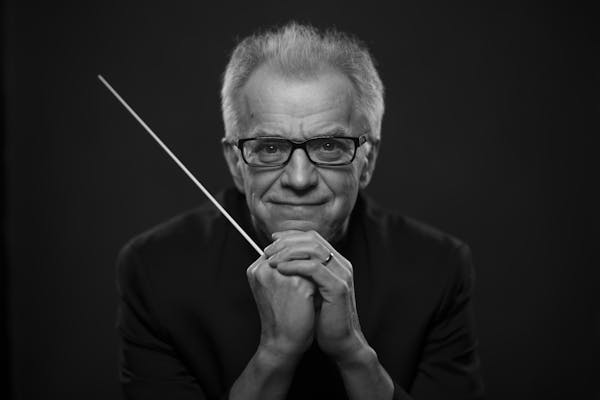When the Minnesota Orchestra announced music director Osmo Vänskä's final season, I asked him which concerts he most avidly anticipated. He immediately mentioned the premiere of the first symphony by a dear friend, composer, conductor and violinist Jaakko Kuusisto.
Planned for Vänskä's penultimate weekend at the helm, that premiere took on a sorrowful hue after Kuusisto died of brain cancer in February at 48.
The symphony was unfinished, but his younger brother, Pekka Kuusisto, who recently completed his tenure as a St. Paul Chamber Orchestra artistic partner, set about completing the work from sketches his brother left behind, working through a grief compounded by their mother's death in April.
It proved a moving finale to Friday night's concert at Orchestra Hall in Minneapolis, a deeply emotional work with lovely layers of orchestral sound, arrestingly stark solos and intriguing interplay among the musicians. The evening was a fine opening to Vänskä's final fortnight, full of high-energy offerings that included a very exciting yet seldom played concerto by Felix Mendelssohn.
Actually, the Minnesota Orchestra wasn't the only orchestra onstage. The concert featured the Sphinx Virtuosi, a string orchestra made up of some of America's most talented young Black and Latinx string players. They started the evening with a work by one of their alumni, Xavier Foley, "Ev'ry Voice," a solemn, then spirited variation on a song often called the Black national anthem, "Lift Every Voice and Sing."
The Sphinx strings subsequently offered a relentlessly exhilarating take on the "Finale Furioso" from Alberto Ginastera's Concerto for Strings. How exciting it was to watch this conductor-less ensemble interacting with visual cues on an anxious roller-coaster ride of a piece.
The concert's centerpiece was Mendelssohn's Concerto for Violin, Piano and Orchestra, a work he wrote at age 14. Mendelssohn may have been classical music's consummate prodigy, arguably surpassing the legendary wunderkind Mozart in the consistent quality of his output. In this case, he wrote a great piano part for himself to premiere, and it was played with an impressive blend of sensitivity and bravado by Finnish pianist Juho Pohjonen.
The violin soloist was Minnesota Orchestra concertmaster Erin Keefe, and she and Pohjonen engaged in some deeply involving dialogues when the orchestra fell away. It's a work full of ebbs and flows of tempo and mood, the segues smooth in the hands of the two soloists. And the Adagio was positively dreamy, reminiscent of the slow movements in a couple of Beethoven piano concertos in sound, underlined when Pohjonen bounded into the vigorous finale a la Beethoven.
Kuusisto's symphony proved a powerful piece, the dark menace of its opening strings giving way to a recurring theme of delight that wrestled with insistent percussion to establish the work's tenor. The solos of cellist Anthony Ross proved engrossing interludes, a brass chorale emerging as a calming influence.
The symphony's closing strains will stay with me longest — a collage of fragmentary phrases inspired by signals sent forth from lighthouses and watercraft, sending Kuusisto's spirit off to sea in a very touching conclusion.
Alas, illness kept me away from the hall Friday evening, but I was able to enjoy the livestream, which will be free on demand through next Friday at minnesotaorchestra.org.
Rob Hubbard is a Twin Cities classical music writer. wordhub@yahoo.com
